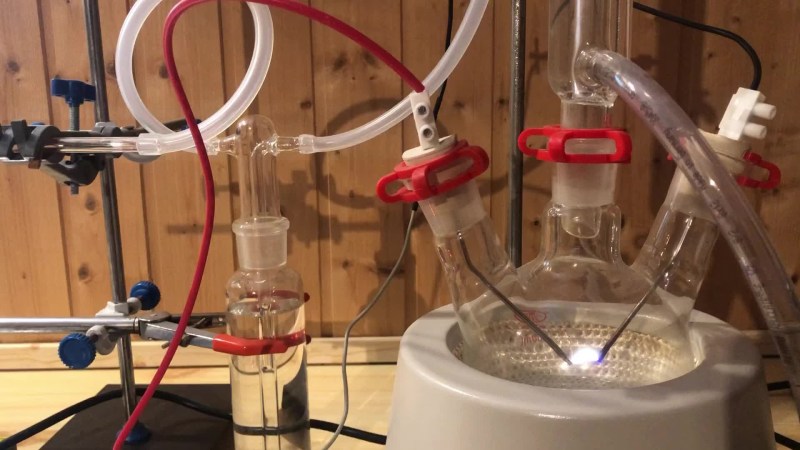It’s a pretty sure bet that anyone who survived high school biology has heard about the Miller-Urey experiment that supported the hypothesis that the chemistry of life could arise from Earth’s primordial atmosphere. It was literally “lightning in a bottle,” with a mix of gases like methane, ammonia, hydrogen, and water in a closed-loop glass apparatus and a pair of electrodes to provide a spark to simulate lightning lancing across the early prebiotic sky. [Miller] and [Urey] showed that amino acids, the building blocks of protein, could be cooked up under conditions that existed before life began.
Fast forward 70 years, and Miller-Urey is still relevant, perhaps more so as we’ve extended our reach into space and found places with conditions similar to those on early Earth. This modified version of Miller-Urey is a citizen science effort to update the classic experiment to keep up with those observations, plus perhaps just enjoy the fact that it’s possible to whip up the chemistry of life from practically nothing, right in your own garage.
[Markus Bindhammer]’s setup is similar to [Miller] and [Urey]’s in a lot of ways, but differs mainly by using plasma as the energy input, rather than a simple electrical discharge. [Markus] doesn’t expand on his reasoning for using plasma other than the practical consideration of it being hot enough to oxidize nitrogen inside the apparatus, providing the anoxic environment needed. The plasma discharge is controlled by a microcontroller and MOSFETs, to keep the electrodes from melting. Also, rather than methane and ammonia, the raw ingredient here is a formic acid solution, because the spectroscopic signature of formic acid has been detected in space, and because it has interesting chemistry that can potentially lead to the production of amino acids.
Unfortunately, while the apparatus and experimental procedure are fairly simple, quantifying the results requires some specialized equipment. [Markus] will be sending his samples off for analysis, so we don’t yet know what the experiment will show. But we love the setup here, which just goes to show that even the greatest experiments are worth repeating, because you never know what you’re going to find.

















Miller’s experiment seemed likely to lead to very major new discoveries. Near the end of his career 40+ years later he noted that it hadn’t happened as hoped or expected. Much was learned along the way, but we are, so far, far far far from anything resembling genuine abiogenesis. Some will tell you otherwise. Check their material carefully.
What about Ryugu?
There are already results of the experiment:: https://www.youtube.com/watch?v=suCMnIyDBho
I was half hoping it would just be a video of you waving
I taught Miller / Urey for 14 years in college biology classes. They were just a little ahead of their times. We are just now discovering micro molecules that can construct the building blocks of life. Proteins have been shown to have the reactivity to create DNA and other building blocks. In 30 years we will know most of the story of Bio-genesis till then new day – new discoveries